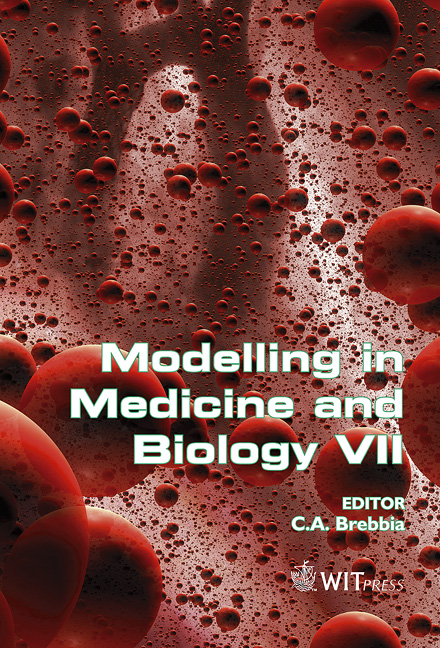A Mathematical Model For The Diagnosis And Treatment Of Idiopathic Intracranial Hypertension
Price
Free (open access)
Transaction
Volume
12
Pages
11
Published
2007
Size
354 kb
Paper DOI
10.2495/BIO070181
Copyright
WIT Press
Author(s)
W. D. Lakin, S. A. Stevens, N. J. Thakore &P. L. Penar
Abstract
Idiopathic intracranial hypertension (IIH) is a syndrome of unknown cause characterized by elevated intracranial pressure (ICP). A stenosis of the venous sinus is observed in many patients suffering from IIH. The role that this feature plays in the etiology of IIH has been a matter of dispute. A lumped-parameter model of intracranial pressure dynamics that accommodates venous sinus stenosis via a Starling-like resistor has been developed to study the etiology, diagnosis, and treatment of IIH. In the absence of the Starling-like resistor, the system has a unique asymptotically-stable steady-state with normal pressures.With this type of resistor present, a second, asymptotically-stable steady-state may exist. This state is characterized by elevated ICP concurrentwith a compressed venous sinus. It is hypothesized that IIH is a physiological manifestation of this elevated steady-state, that the primary cause of IIH is a compressible, as opposed to rigid, venous sinus, and that the observed stenosis is a necessary characteristic of the elevated steady-state. Simulations suggest a possible diagnostic technique for IIH, and the efficacy of various treatment options is examined. Results also indicate that the venous sinus stenosis may persist even after treatment has reduced the elevated ICP of IIH. 1 Introduction Idiopathic intracranial hypertension (IIH), also called pseudotumor cerebri and benign intracranial hypertension, is a syndrome of unknown cause characterized by elevated intracranial pressure (ICP) without evidence of ventricular dilatation, mass lesion, or dural sinus thrombosis. It presents with symptoms of headache,
Keywords





